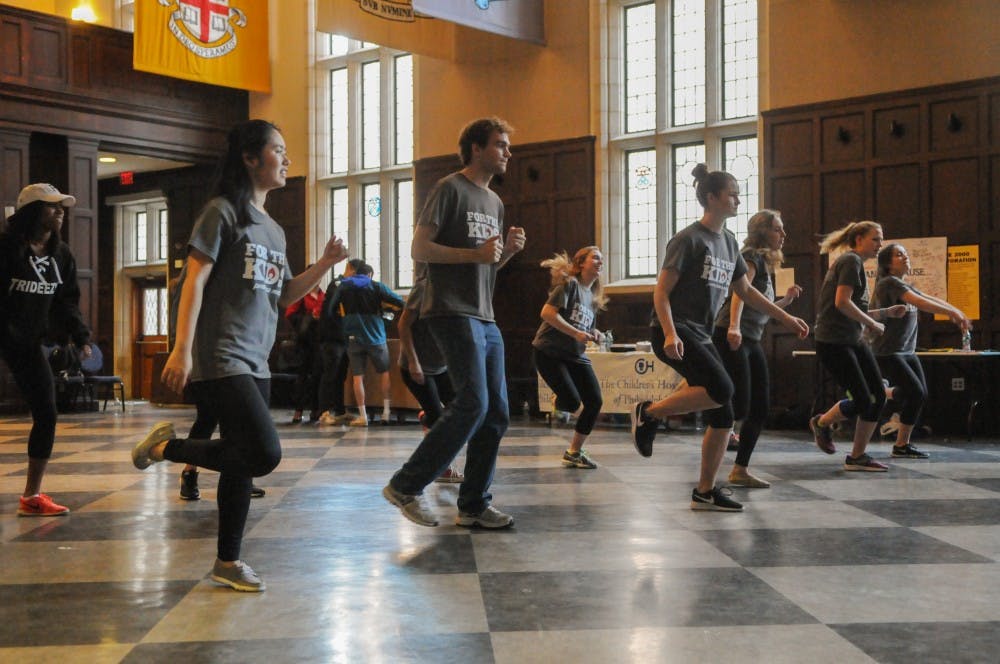Amateur dancers and polished student performers moved to booming pop music on Sunday afternoon, but it wasn’t just a dance party — the participants were helping raise money for children’s health care.
Following in the footsteps of college dance marathons across the nation, the first-ever Penn Dance Marathon raised money for the Children’s Hospital of Philadelphia. Their efforts, culminating in seven hours of dancing, singing, games and entertainment, raised a total of $3,814.96.
After participating in many smaller dance marathons during high school, Penn’s Dance Marathon Executive Director and College and Engineering sophomore Marcello Chang came to Penn excited to experience a collegiate marathon. He said he was surprised when he found out that although Penn boasts more than 450 student-run clubs, there were none dedicated to organizing a dance marathon.
Inspired by CHOP’s work and the potential to make an impact, Chang seized the opportunity to start a club to bring the fundraising event to Penn, strengthening the relationship between Penn’s student body and CHOP.
Some of the largest benefactors of dance marathons are the 170 member hospitals within the Children’s Miracle Network, including nearby CHOP. According to the organization’s website, millions of dollars are raised annually through the dance marathons hosted at over 300 schools nationwide.
James Sadowski, an 18-year-old cancer survivor, spoke at the event about his personal experience at CHOP. He explained how CHOP correctly diagnosed and successfully treated his lymphoma.
“I’m the voice for the ones who don’t have one in this situation,” he said.
In contrast to most charities where corporate offices determine the allocation of funds, donations to the Children’s Miracle Network “stay local to fund critical treatments and healthcare services, pediatric medical equipment and charitable care,” the website states, which Chang emphasized helps children like Sadowski battle illness.
Penn’s Dance Marathon was able to bring in six different performing arts groups as well as instructors from Pottruck Health and Fitness Center to perform and teach dances throughout the day.
Chang said the mission for Penn’s Dance Marathon “goes beyond fundraising,” adding that it also encompasses “developing a connection between our university and the children’s hospital ... and about awareness, helping out whenever we can.”
The club’s goal is to get the greatest number of people involved, bringing the community together to support the cause. As Chang puts it, “dancers over dollars.”
As this is the first year of the event, Chang said organizers are “still figuring things out” and in the future he hopes to “work with local business [and] work with other students groups.”
Chang said that unlike Penn State’s 46-hour dance marathon, Penn’s seven-hour event was simply “a taste of what dance marathons are like.”









